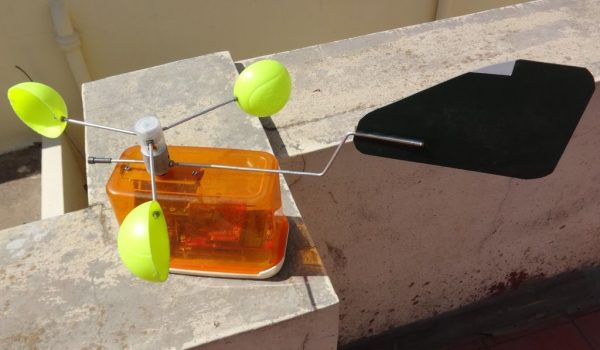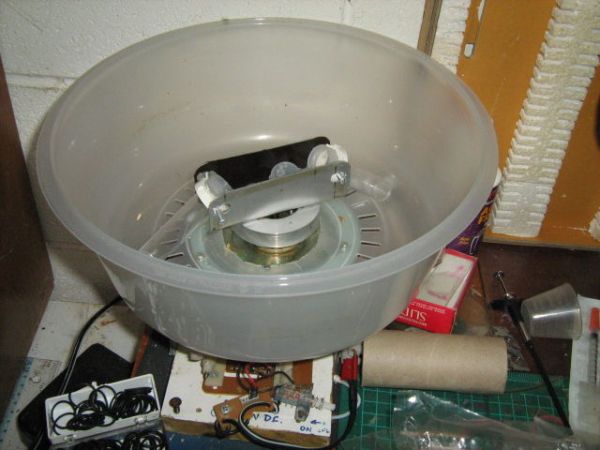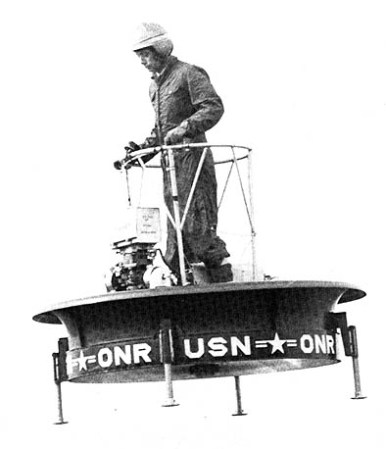Problem: build a combined anemometer and wind vane where the pivots for both sensors are coaxial. Solution: turn an old universal motor into a step-wise potentiometer for the wind vane, and then pull a few tricks to get the whole thing assembled.
 We have to admit that when we first saw [Ajoy Raman]’s Instructables post, we figured that he used a universal motor to generate a voltage from the anemometer. But [Ajoy]’s solution to the coaxial shafts problem is far more interesting than that. A discarded universal motor donated its rotor and bearings. The windings were stripped off the assembly leaving nothing but the commutator. 1kΩ SMD resistors were soldered across adjacent commutator sections to form a series resistance of 22kΩ with taps every 1k, allowing 0 to 2.2V to be read to the ADC of a microcontroller depending on the angle of the vane.
We have to admit that when we first saw [Ajoy Raman]’s Instructables post, we figured that he used a universal motor to generate a voltage from the anemometer. But [Ajoy]’s solution to the coaxial shafts problem is far more interesting than that. A discarded universal motor donated its rotor and bearings. The windings were stripped off the assembly leaving nothing but the commutator. 1kΩ SMD resistors were soldered across adjacent commutator sections to form a series resistance of 22kΩ with taps every 1k, allowing 0 to 2.2V to be read to the ADC of a microcontroller depending on the angle of the vane.
As clever as that is, [Ajoy] still had to pull off the coaxial part, which he did by drilling out the old motor shaft from one end to the other using just a drill press. The anemometer shaft passes through the hole in the shaft and turns a small DC motor to sense wind speed.
There might have been other ways to accomplish this, but given the constraints and the low cost of this solution, our hats are off to [Ajoy]. We’re a little concerned with that motor used for the anemometer, though. It could result in drag when used as a generator. Maybe a better solution would be a Hall-effect sensor to count rotations of a hard drive rotor.
Continue reading “Old Motor Donates Rotor For Coaxial Wind Vane And Anemometer”














